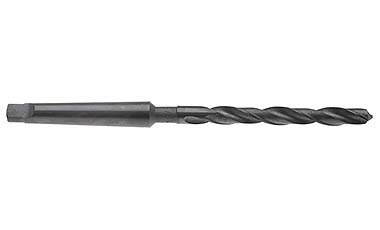My approach is to center drill first; then use a short stubby drill for the first inch or so to establish a good concentric hole with the centerline of the lathe. Then use a regular length drill and then a longer drill to reach the finished depth. The key to deep drilling is to make sure the point of the drill is on the center line of the shank and both cutting sides are at the same angle with the proper relief for the material you are drilling. What causes the drill to drift is applying to much pressure on the drill to make it cut or to be in to big of a hurry to get the job done. Patience and by all means use cutting fluid and keep the chips cleared from the web of the drill. If they are allowed to build up, the drill will drift. Do not hesitate to take the drill out and re-sharpen if excessive pressure is needed to drill the hole. To help with the cutting pressure, I like to thin the web of the drill bit at the point. Typically the point is not doing a whole of cutting, it is just keeping the drill on track.
Anyway, my two cents worth and a whole lot of hole drilling over the past 50 years.
Till later, Larry





